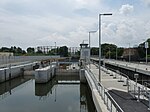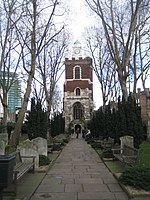ABBA Voyage
ABBA Voyage is a virtual concert residency by the Swedish pop group ABBA. The concerts feature virtual avatars (dubbed 'ABBAtars'), depicting the group as they appeared in 1979, and utilise the songs' originally-recorded vocals accompanied by a live instrumental band on stage. The concerts are held in a purpose-built venue at the Queen Elizabeth Olympic Park in London, officially called the ABBA Arena.The digital versions of ABBA have been created with motion capture and performance techniques with the four band members and the visual effects company Industrial Light & Magic, in what is the company’s first foray into music. The ABBA Voyage concert is produced by Svana Gisla and Ludvig Andersson, director Baillie Walsh, co-executive producer Johan Renck and choreographer Wayne McGregor. Pophouse, a Swedish entertainment company, is a co-developer of the project and its lead investor. Two Pophouse executives, Michael Bolingbroke and Per Sundin, both serve in leadership positions of the production company behind the show. According to multiple media reports, the project is one of the most expensive live music experiences in history, with a budget of $175 million. The show was nominated for two categories at the 21st Visual Effects Society Awards, losing Outstanding Virtual Cinematography in a CG Project to the science-fiction film Avatar: The Way of Water, but winning Outstanding Visual Effects in a Special Venue Project.
Excerpt from the Wikipedia article ABBA Voyage (License: CC BY-SA 3.0, Authors).ABBA Voyage
Pudding Mill Lane, London Stratford Marsh (London Borough of Newham)
Geographical coordinates (GPS) Address Nearby Places Show on map
Geographical coordinates (GPS)
| Latitude | Longitude |
|---|---|
| N 51.53277 ° | E -0.0136 ° |
Address
ABBA Arena
Pudding Mill Lane
E15 2RU London, Stratford Marsh (London Borough of Newham)
England, United Kingdom
Open on Google Maps







